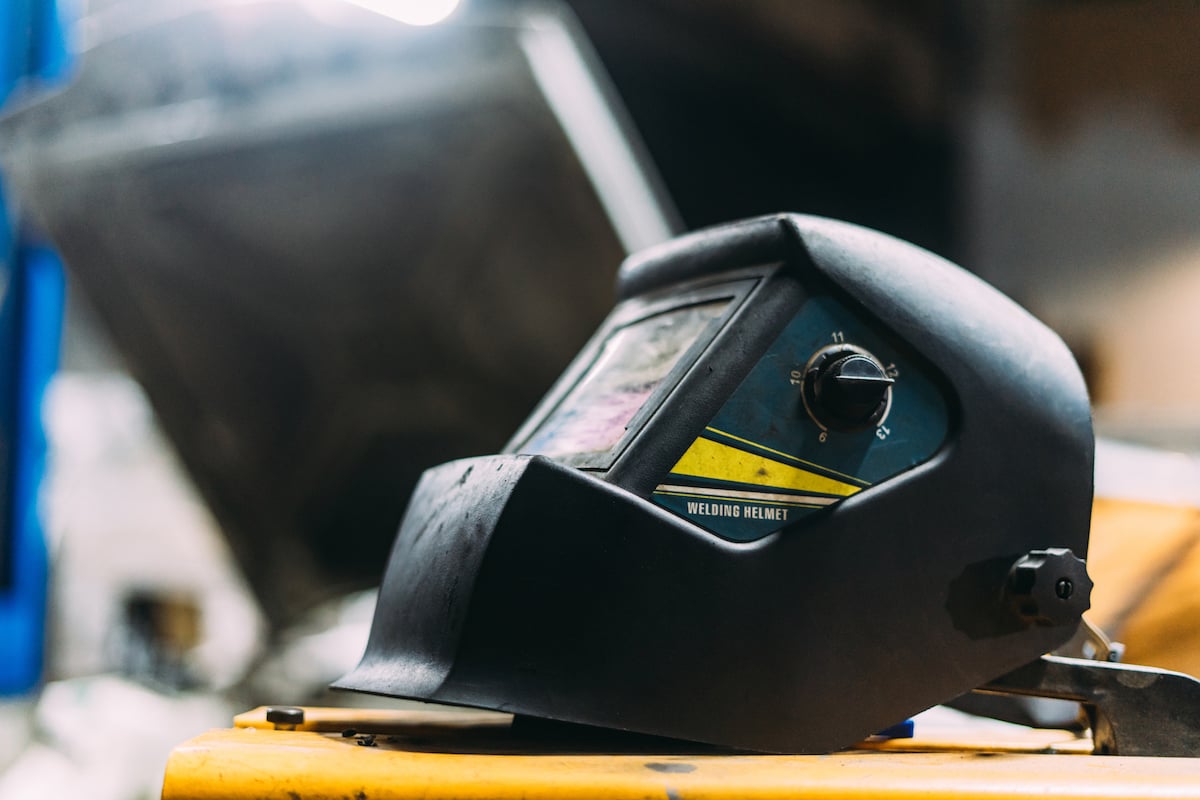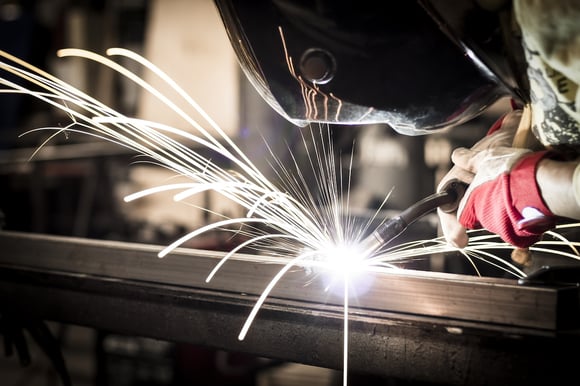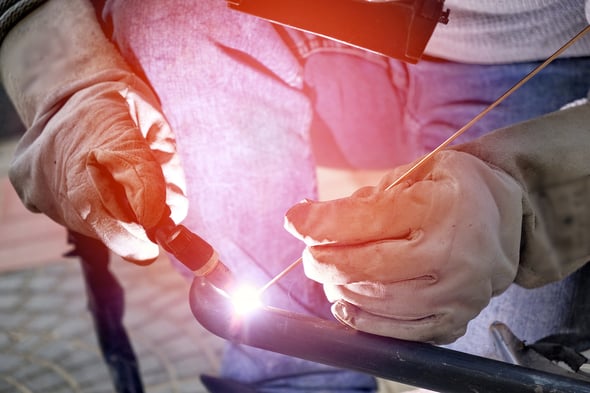MIG vs. TIG Welding: Which is Better?

The two most common types of welding in the metal fabrication industry are MIG welding (metal inert gas) and TIG welding (tungsten inert gas). Both are forms of arc welding, which uses an electrical current to melt various types of base materials and/or bonding materials to create a solid joint between two pieces of metal when cooled.
Even though both MIG and TIG welding are forms of arc welding, the main difference lies in the technique and equipment used to weld two pieces of metal together. Each method has its own unique pros and cons. Knowing where MIG and TIG welding are best utilized in a metal fabrication project will ensure your design will meet your needs relative to strength, appearance, and costs.
MIG Welding Explained
MIG welding uses Gas Metal Arc Welding (GMAW) equipment that automatically feeds the filler rod — a consumable electrode — through a torch gun. This is why it is sometimes referred to as “point and shoot” welding. The welding equipment can be adjusted to control power and feed rates to match the type of material and size of weld required.
A signature sign that a joint was MIG welded is that the weld area has a raised surface. When using MIG welding, it can be difficult to control the amount of bonding material being fed through the torch, and the speed at which the welder moves their hands, resulting in excessive puddling.

Pros of MIG Welding
- Typically an easier method to learn requiring less eye and hand coordination
- Good for larger, thicker materials
- Is a faster welding process than TIG
- Generally results in lower production costs due to less labor time
- Versatile method that can be performed on aluminum, carbon steel, stainless steel, and alloys, and can weld different types of metal together
- High heat levels can cut through imperfections in the base metal (can be better for repairs on old metal)
Cons of MIG Welding
- Welds are typically not as capable of withstanding stress before failure of the surrounding metal as compared to TIG welding
- Weld joints may not be as clean or aesthetically pleasing
- Not suitable for ultra-precise tolerances or finished goods
- Difficult to perform on thin sheet metal materials
MIG Welding Applications
- Automotive industry (where aesthetics aren’t an issue, such as frames, hidden components, etc.)
- Construction, agriculture, and infrastructure
- Heavy, thick materials used in various industries like shipbuilding, construction, and heavy equipment
- Industrial manufacturing industries that fabricate steel structures or components
TIG Welding Explained
TIG welding uses Gas Tungsten Arc Welding (GTAW). Unlike MIG welding which guides the filler rod through a torch to join two pieces of metal, TIG welding requires the welder to manually feed the tungsten electrode with one hand at precisely the rate needed for the application while positioning the torch with the other hand to apply heat and create the weld. At the same time, the welder needs to control amperage, typically with a foot pedal.
As such, it requires much more skill and coordination than MIG welding to get good results. TIG welding also produces more heat, creating deeper penetration and a stronger bond. When done properly, the finished seam is smooth and free of puddling or bumps. In some applications, very little to no tungsten electrode is required, using just the base materials to join metals together, creating a very smooth and aesthetically pleasing finish.

Pros of TIG Welding
- Allows the welder to have more control over the quality of the weld
- Weld joints are smooth and aesthetically pleasing
- Ideal for complex, ultra-precise tolerances and smooth, high-quality finishes
- Can be used on thick or thin metals, including aluminum, steel, stainless steel, carbon steel, nickel alloys, and more
- A better option for aluminum, allowing for higher quality results on lighter gauge materials
- Assuming proper setup and proper penetration, both MIG and TIG welds will have the same tensile strength. The difference is found in the heat affected zone (HAZ); the TIG weld will have the smallest HAZ and, therefore, withstand more stress than MIG welding before failure of the surrounding material.
Cons of TIG Welding
- Requires technical skill and training to become proficient
- Is a more time-consuming process than MIG welding
- Generally results in higher production costs due to increased labor time
- Requires the surface of the metal to be clean and free of imperfections
TIG Welding Applications
- Defense industry (Shipbuilding, radar systems, aerospace, etc.)
- Thin sheet metal materials, especially aluminum or stainless steel, where aesthetics is important
- Printing & Converting Equipment
- Food and beverage processing equipment
- Custom parts & fabrications that require extremely tight tolerances and attractive finishes
Is MIG Welding or TIG Welding Better?
MIG and TIG welding both have their advantages and disadvantages, and there is a place for each in manufacturing. It all comes down to the desired application and quality of finish that is required for the project at hand. Critical use applications, like those in the defense industry, often require the added strength and finish quality of TIG welding, whereas some construction or automotive applications and repairs that are not visible could use MIG welding.
Admittedly, identifying whether you need MIG or TIG welding for your metal fabrication project isn’t always straightforward. Here at Fox Valley Metal-Tech, we’re happy to talk through your intended use, materials, required tolerances, and other project details to help you submit the proper specifications. Using our resource, Metal Fabrication RFQ Guide — A Checklist of Commonly Overlooked Specifications, can also help you identify some considerations you might not have thought of. Access it below, and reach out with any questions.
